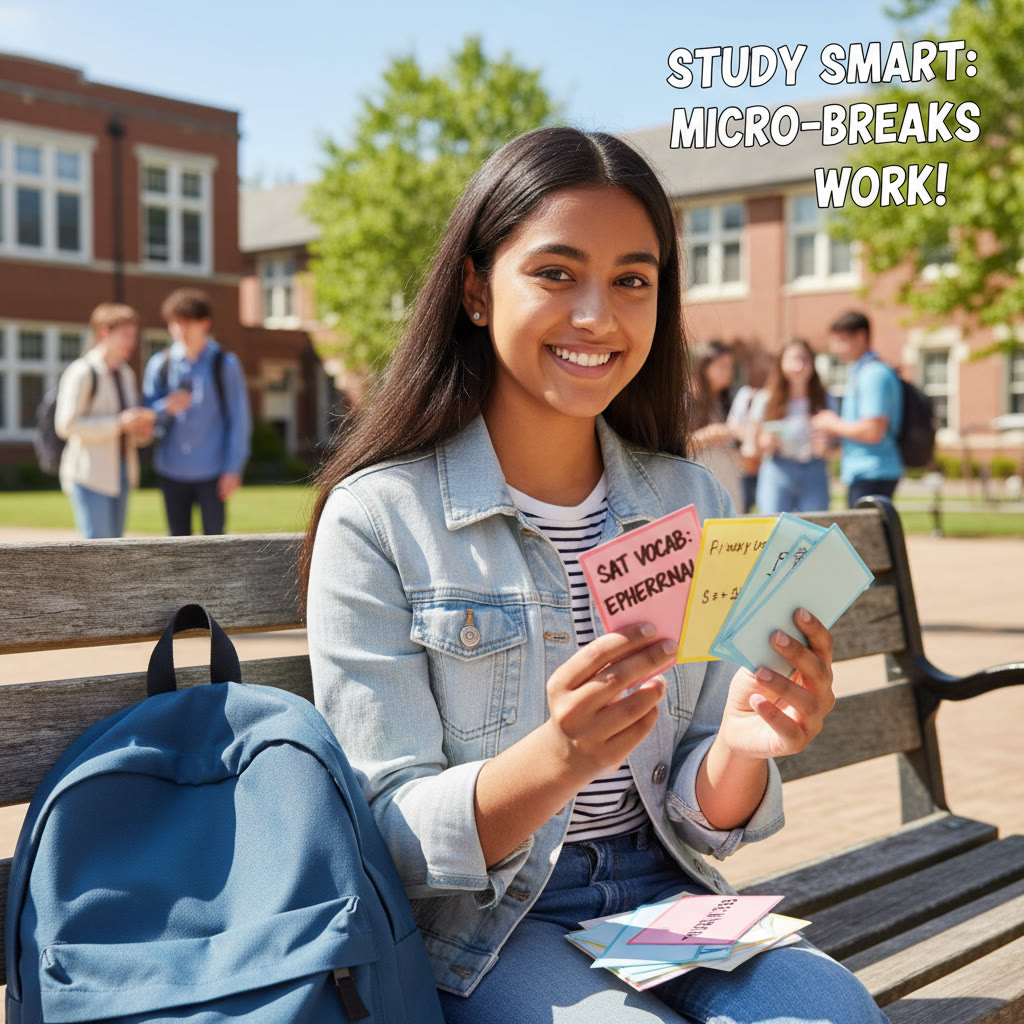Why switching schools can feel like a crisis — and why it doesn’t have to
Moving from one school to another in the middle of your SAT prep is like trying to sprint while switching shoes: awkward, uncomfortable, and potentially slowing you down. You may be juggling new teachers, different class schedules, unfamiliar social circles, and the practicalities of changing routines. Add the SAT — one of the most consequential standardized tests for college admissions — and the pressure can spike.
Good news: a deliberate, flexible plan turns disruption into advantage. Switching schools forces you to reassess priorities, build new habits, and often become more intentional about time use. With a few smart moves you can protect your progress on the SAT and even come out stronger.
First things first: immediate practical steps
1. Pause, assess, and list
Take a deep breath and do a five-minute triage. What changed? New commute time? Different class blocks? New extracurriculars? List the practical differences that will affect study time and energy. This is not the moment to overwhelm yourself — it’s to identify concrete constraints you’ll plan around.
2. Contact your new school’s guidance office
Guidance counselors are often underused allies. Explain that you’re preparing for the SAT and share your target month. Ask about testing accommodations, schedule flexibility, or quiet spaces for study. Many counselors will help you find time for practice tests or connect you with peer study groups.
3. Retrieve or recreate your study history
Collect your practice test scores, error logs, and any notes you recorded. If you used digital platforms, make sure you can access them from your new device or account. If records are fragmented, reconstruct a simple snapshot: average practice score, three weakest areas, and most effective study methods so far. This snapshot will be the core of your new, adaptable plan.
Make a flexible, school-aware study plan
Rigid plans break under the stress of change. The key is to build a structure that adapts to school-specific constraints like block schedules, lab periods, or a longer commute.
How to design a flexible weekly plan
- Define a weekly “study budget”: total hours you can reasonably commit. Be honest — include time lost in transition (commute, lunch lines, new routines).
- Allocate by priority: practice tests, content review, timed sections, and light review. For example: 1 full practice test, 2 targeted practice sessions, and 2 content-review sessions per week.
- Make contingency slots: 2 half-hour windows labeled “flex” for unexpected events.
- Use themes for each day: e.g., Monday = Math fundamentals, Wednesday = Reading strategies, Friday = timed section practice. The mental cue reduces decision fatigue.
Sample weekly time allocation
This table gives a simple way to divide a 10-hour weekly SAT study budget — a manageable amount for busy students switching schools.
| Activity | Hours per week | Why it helps |
|---|---|---|
| Full practice test (timed) | 3 | Builds stamina and pinpoints weak areas |
| Targeted practice (section-specific) | 3 | Improves skills where you lose points |
| Content review (mini-lessons + notes) | 2 | Fills knowledge gaps efficiently |
| Test-taking strategy & timing drills | 1 | Enhances pacing and reduces careless errors |
| Light review / flashcards | 1 | Maintains retention without heavy time investment |
Scheduling tactics when your day keeps changing
Find the real pockets of time
Don’t assume you have an hour-free block. Look for 15–30 minute pockets: bus rides, a gap between classes, a lunch period, or the 10 minutes before a club meeting. Those short windows are perfect for focused tasks: vocab flashcards, a single math problem type, or reviewing one paragraph strategy.
Use “micro-blocks” to keep momentum
- 10–15 minutes: vocabulary, formula flash, or a grammar rule.
- 20–30 minutes: a timed Reading passage or a Math problem set focused on one concept.
- 60–90 minutes: simulate a single section under test conditions.
Micro-blocks are especially useful when switching schools because they fit around shifting schedules without requiring a major commitment.
Make transitions intentional
If your commute lengthens or your schedule changes, convert transit time into study time by listening to passive content like strategy podcasts or audio summaries of grammar rules. If you’re driving, use audio-only formats focused on high-level strategies or mental preparation techniques.
How to keep practice tests meaningful during a school switch
Practice tests are the most honest indicator of progress. But when life is disrupted you may be tempted to skip them. Resist that urge.
Quality over quantity
One full, properly timed practice test per week is far more useful than three rushed tests. If weekly full tests aren’t possible, break them into two half-tests across two days, but keep timing and blocking consistent.
Turn practice into diagnosis
- Immediately log every incorrect answer and label the reason (concept, careless error, time pressure).
- Create a running “error map” with patterns. Maybe you miss inference questions in Reading or quadratic applications in Math. The map helps you spend limited time where it matters most.
- Use short review sessions to fix the most common 2–3 error types.
Study techniques tailored to changing environments
Reading: build habits that travel with you
Switching schools may change your reading time, but portable strategies stick. Practice passage mapping: jot a two-line summary, mark author tone, and underline the main idea in the margin. Over time, that habit reduces re-reading and saves time on the test.
Writing & Language: make grammar rules work in bite-sized sets
Carry a short grammar cheat-sheet (digital or paper) with five high-yield rules: subject-verb agreement, pronoun clarity, comma usage, parallelism, and modifier placement. Drill one rule per micro-block until it becomes reflexive.
Math: prioritize concept clusters
Math topics on the SAT often come in clusters: algebraic manipulation, functions, geometry, and data analysis. If you’ve limited study time while adjusting to a new school, focus on the two clusters that historically cost you the most points. One focused hour mastering a problem type nets more points than scattered study.
Use school resources and build a local support network
Talk to teachers early
Introduce yourself to your new math and English teachers. Explain your SAT timeline; many are happy to point you toward helpful units or suggest ways to consolidate learning. If a teacher offers an after-school review, prioritize it if it fits your plan.
Form a study bubble
Classmates can become study partners or moral support. A weekly 60–90 minute study bubble (in the library or a quiet classroom) keeps you accountable and makes practice tests less lonely. If you can’t find in-person partners, a virtual check-in works just as well.
How to keep momentum when records and routines are lost
Recreate the essentials in 30 minutes
If you lost practice logs or notes during the move, spend 30 minutes assembling a minimal tracker: last practice date, last practice score, three weakest topics, and top three improvement actions. This quick reconstruction gives your study plan direction without demanding perfection.
Digitize to avoid future loss
Use cloud notes, a simple spreadsheet, or a study app so your records move with you. That also makes it easier to share progress with tutors, counselors, or parents.
When to consider tutoring and how to fit it in naturally
Switching schools is a natural time to add support. You’re still adapting to new expectations, and expert guidance helps you avoid wasted effort.
What tutoring can offer during a school transition
- Focused accountability: a tutor keeps your study plan realistic and consistent.
- Targeted skill repair: expert tutors isolate the exact misunderstandings causing errors.
- Schedule flexibility: many tutors work around school schedules and can provide short, intense sessions that fit micro-blocks.
For example, Sparkl’s personalized tutoring and benefits — including 1-on-1 guidance, tailored study plans, expert tutors, and AI-driven insights — can be especially helpful when you’re juggling a changing routine. A coach who understands your school’s schedule and your personal constraints can help you turn those micro-blocks into measurable progress.
Test-day logistics when you’ve switched schools
Confirm your testing location early
If you’ve moved districts, your usual test center or school might be different. Register early, double-check the test center address, and plan transportation. A couple of rehearsals (driving the route or taking the bus) reduces morning stress.
Bring essentials and a calm routine
- Valid photo ID, admission ticket, No. 2 pencils (or allowed mechanical pencils), approved calculator, snacks for after the test.
- Sleep and eat: the day before, prioritize a good night’s rest and a breakfast that sustains energy. New schools invite new stress — avoid trying new foods the morning of the test.
Mental health, resilience, and realistic expectations
Normalize the transition
Feeling anxious or thrown off is normal. Say it out loud: “I’m adapting, and my prep will be imperfect for a bit.” That acceptance reduces self-criticism and lets you focus on control: predictable study habits, small wins, and consistent practice tests.
Use short wins to build confidence
- Celebrate small improvements: a lower error rate on a question type, or a full week where you followed your micro-block plan.
- Log two wins at the end of each study session. It’s a simple habit that combats the “everything changed” narrative and reinforces momentum.
A sample 6-week plan for students switching schools
This plan assumes you have roughly 6 weeks until test day and about 8–10 hours a week to study. It’s intentionally flexible: swap days, split sessions, or move blocks as needed.
| Week | Primary Focus | Weekly Plan (examples) | Goal |
|---|---|---|---|
| 1 | Diagnostics & Routine | 1 full practice test; create error map; establish two 30-min daily micro-blocks | Know baseline and find real study pockets |
| 2 | Core Content Repair | Target weakest two topics (Math + Reading) with focused practice; one timed section | Close immediate content gaps |
| 3 | Strategy & Timing | Pacing drills; one full test; practice transitions between sections | Improve timing and reduce careless errors |
| 4 | Practice & Reinforce | Two focused practice sessions on persistent errors; targeted review sessions | Reinforce improvements into habit |
| 5 | Peak Practice | One full test under strict timing; review all mistakes; short drills for easier questions | Simulate test-day stamina and pacing |
| 6 | Polish & Rest | Light review, last short practice, sleep and routine focus | Arrive calm and confident |
Real student examples (short and true-to-life)
Case 1: Emma switched schools mid-January and found her after-school study time cut by 30 minutes because of a new club. She reclaimed three 15-minute bus trips for flashcards and replaced one 90-minute weekend study block with two 45-minute sessions during the week. The decentralized plan reduced burnout and maintained consistency.
Case 2: Jamal moved districts and now had a longer commute. He recorded short math solution walkthroughs on his phone and listened on the bus. He also scheduled two virtual tutoring sessions per week with a tutor who provided short, focused assignments. Those sessions were a lifeline because they fit into his new rhythm.
How to measure progress that matters
Focus on patterns, not single scores
A single practice test can vary by 20 points for many reasons. Track trends over three–four tests: are you missing fewer questions on inference? Are math careless errors declining? Those trends are the real signal.
Use an error log for objective feedback
- Record question type, mistake reason, and corrective action.
- Review the log weekly and set micro-goals: e.g., reduce algebraic manipulation errors by 50% in two weeks.
When life gets hectic: an emergency “hold pattern”
Sometimes school transitions come with unavoidable chaos. If you must temporarily reduce study time, switch to a maintenance mode rather than stopping entirely. Keep two 15–20 minute micro-blocks daily for flashcards and one practiced timed section every 10 days. This prevents skill decay and keeps the habit intact so you can ramp back up quickly.
Bringing it together: a short checklist to carry with you
- Create a simple study snapshot: baseline score, three weaknesses, available weekly hours.
- Find micro-blocks and theme your days.
- Keep one full practice test per week or two half-tests across two days.
- Log every mistake and fix two high-frequency errors each week.
- Use school resources and form a study bubble.
- Consider short, focused tutoring — especially tutoring that understands transitional logistics, like Sparkl’s personalized tutoring and benefits — for accountability and targeted repair.


Final encouragement
Switching schools while preparing for the SAT is challenging, but it’s a temporary phase — and it contains an opportunity. The skills you build now (flexible planning, micro-habits, targeted review) are exactly the habits that will serve you in college and beyond. Approach the transition with patience, track the small wins, and remember that steady, strategic action beats frantic, unfocused effort.
If you find yourself overwhelmed, think small: one practice test, one error type fixed, one consistent micro-block. With structure, community, and sometimes a little expert help, you’ll protect your SAT progress and move forward with confidence.
Good luck — you’ve got this.
















No Comments
Leave a comment Cancel